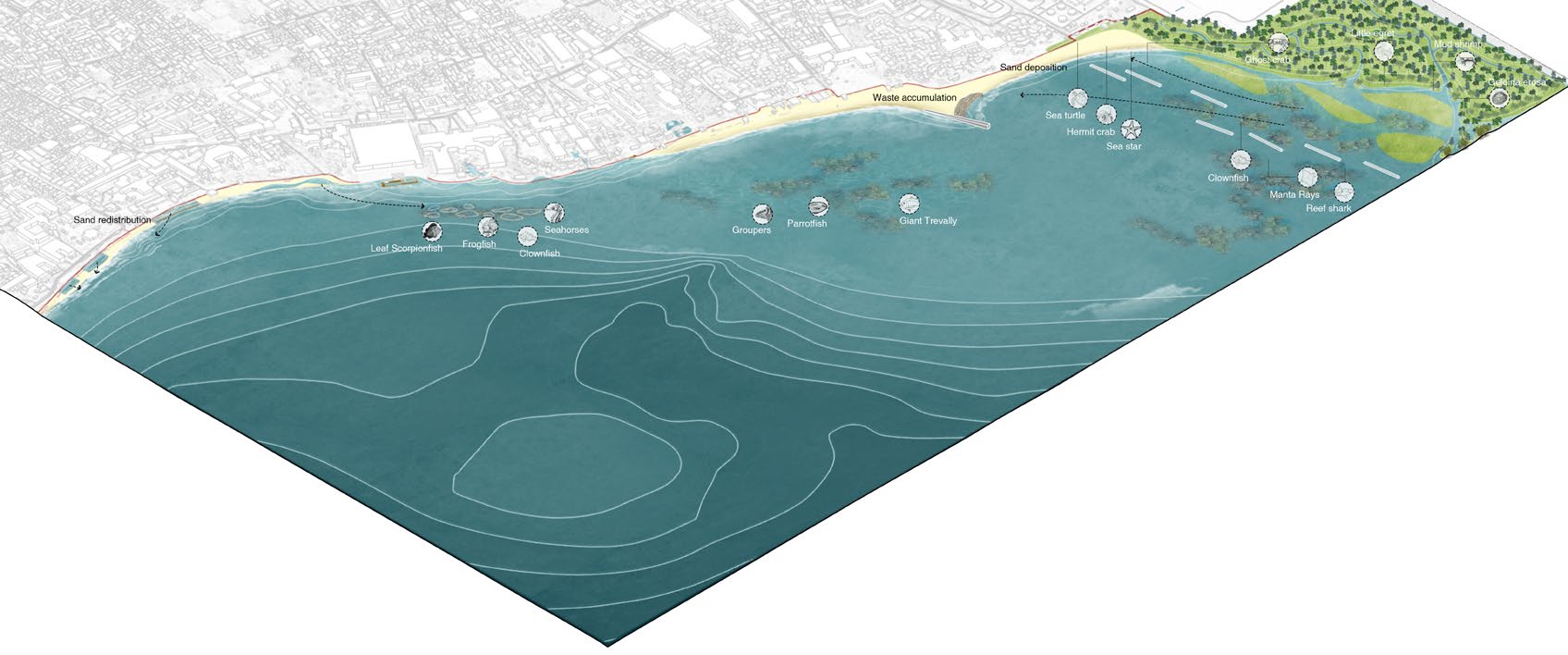Designing with Change: Strategies for Climate Adaptive Coastline Management in Bali

Many Southeast Asian islands have experienced significant coastline changes driven by both natural and human-induced factors, impacting coastal ecosystems and local livelihoods. In Bali, a well-known tourist destination where tourism relies heavily on coastal resources, severe coastal erosion demands urgent and holistic solutions. However, existing coastal management tends to prioritise erosion control through single-method approaches, often overlooking habitat destruction and long-term resilience.
This design research proposes a climate-adaptive coastline management framework using three approaches. First, it leverages coastal dynamics—such as sediment erosion, tidal movement, and marine debris—to create multifunctional landscapes that support habitat enhancement while accommodating human use. Second, it employs Integrated Coastal Zone Management (ICZM) to balance environmental conservation, economic development, and multi-stakeholder collaboration. Third, it incorporates traditional wisdom, such as Sasi Laut practice, which involves manipulating water areas to regenerate ecosystems and ensure long-term livelihood security. By applying these strategies, the study proposes an alternative coastal landscape model that fosters economic growth while conserving natural systems, paving the way for a socio-ecologically resilient island.

Jerman Beach and Kuta Beach located north of the airport were chosen as the pilot sites for this project. Compared to other beaches in the study, this area has a higher vulnerability to coastal erosion and marine debris. It was thus reasoned that this area could best demonstrate how landscape design can have a significant impact on troubled coastal ecology.


The overall strategy is to re-naturalise the coastline by taking away engineered coastal protection structures such as sea walls and offshore breakwaters. In addition, the strategy includes partially removing underutilized, reclaimed areas, for they have an underwater shape that stirs up large amounts of sediment and severely affects the marine ecology. Sand, soil and riprap are then redistributed to intentionally shape new landforms. Coral habitats are gradually restored, and new mangrove habitats are formed in the de-reclaimed areas.
